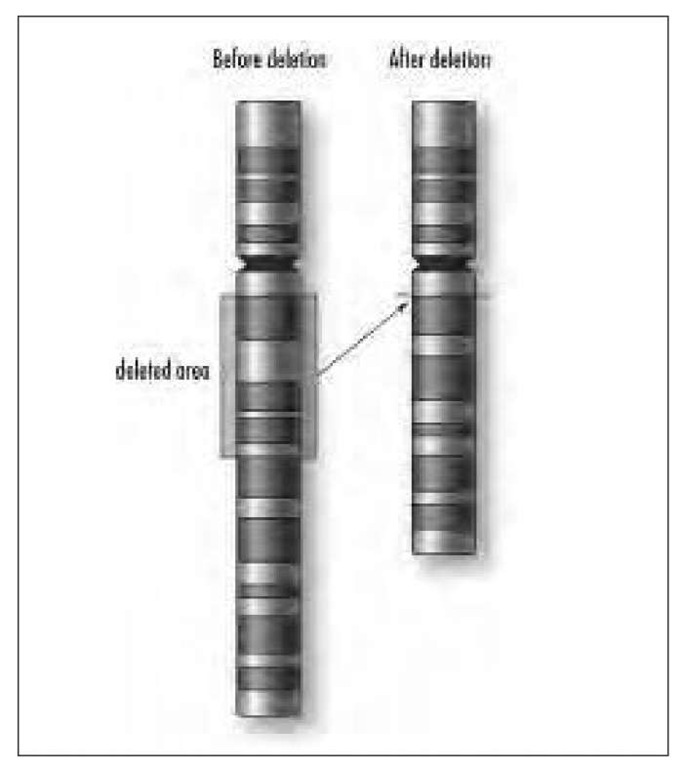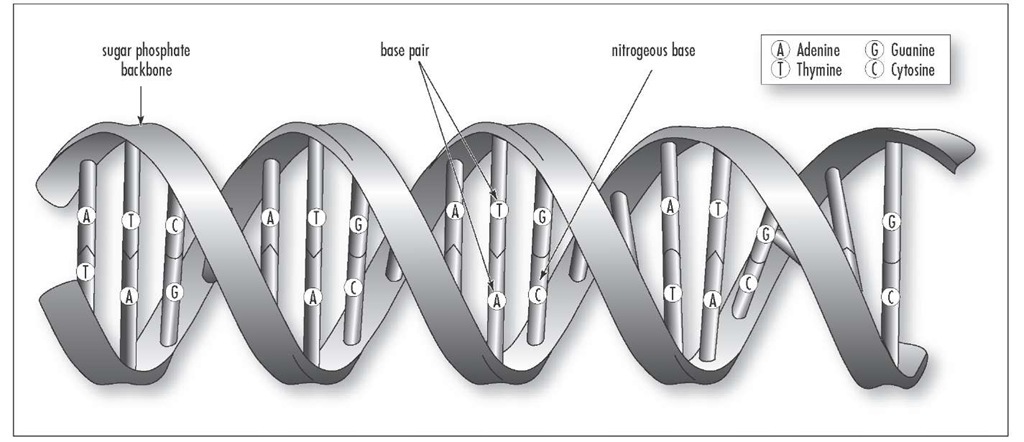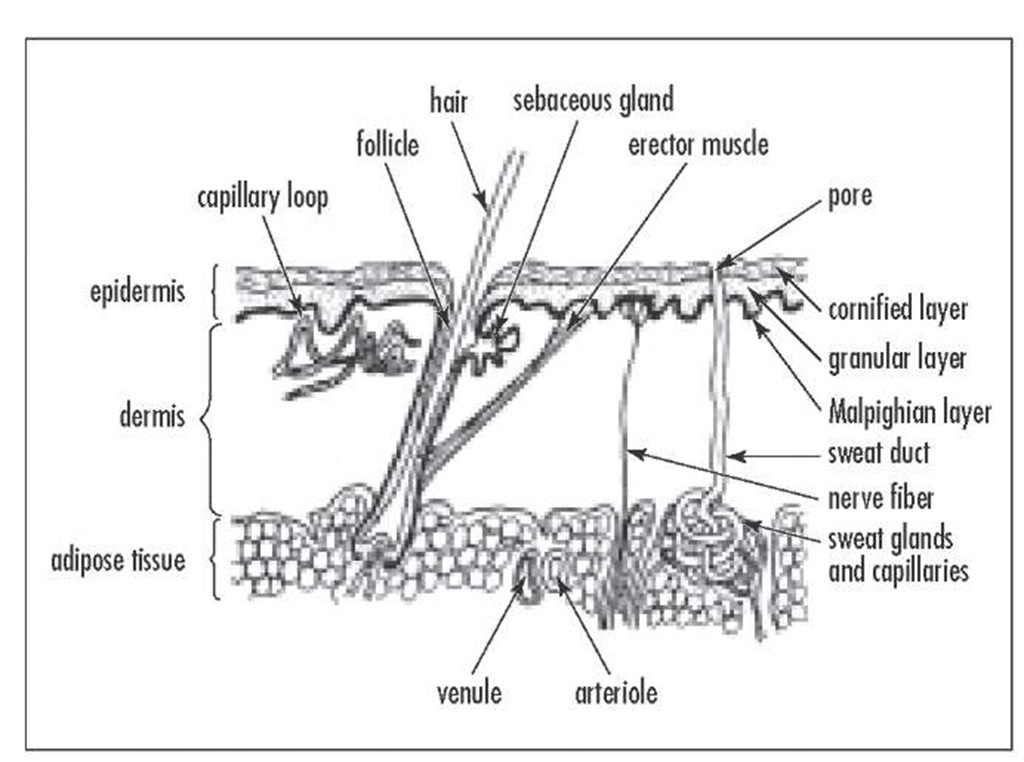Decomposers A trophic level or group of organisms such as fungi, bacteria, insects, and others that as a group digest or break down organic matter (dead animals, plants, or other organic waste) by ingesting, secreting enzymes or other chemicals, and turning them into simpler inorganic molecules or compounds that are released back into the environment.
Decumbent A plant or part of the plant that is reclining or lying on the ground but with the tip or apex ascending or pointing up. Also called prostrate, as in a prostrate shrub.
Dehiscent A fruit or seed capsule that splits open.
Dehydration reaction (condensation reaction) A chemical reaction in which two organic molecules become linked to each via covalent bonds with the removal of a molecule of water; common in synthesis reactions of organic chemicals.
Dehydrogenase An oxidoreductase that catalyzes the removal of hydrogen atoms from a substrate.
Deletion A type of mutation where an alteration or loss of a segment of DNA occurs from a chromosome as the consequence of transposition, i.e., when DNA is being moved from one position from one genome to another. Such mutations can lead to disease or genetic abnormality. A terminal deletion refers to breakage and loss off the end of a chromosome, while an interstitial deletion is the loss of material from within the chromosome, but between the ends. Examples of deletion are Angelman syndrome, a combination of birth defects caused by inheriting both copies of the No. 15 chromosome from the father, and Prader-Willi syndrome, a combination of birth defects caused by inheriting both copies of the No. 15 chromosome from the mother or by inheriting a deletion of a region in the proximal long arm of chromosome No. 15 from the father. Hypopigmentation, which is unusually lighter hair, eyes, and skin color in relation to other family members, is common in Prader-Willi syndrome, especially in individuals with a partial deletion of the long arm of chromosome 15. Cri du Chat syndrome is a rare combination of birth defects caused by a deletion of chromosome 5p.
A particular kind of mutation, i.e., the loss of a piece of DNA from a chromosome. Deletion of a gene or part of a gene can lead to a disease or abnormality.
Deme One or more local populations of a taxon that can interbreed.
Demography The scientific inquiry into the vital statistics of populations that includes sizes, age-sex compositions, ratios, distributions, densities, growth, natality, mortality, migration, and other characteristics as well as the causes, characteristics, and consequences of changes in these factors. Because the study seeks those relationships that can be expressed precisely and quantitatively, demographers use quantitative analytical methods, but they turn to other disciplines such as anthropology, sociology, and others to explain them. U.S. Census data are a major source of demography for human studies.
Denaturation In DNA denaturation, two strands of DNA are separated as a result of the disruption of the hydrogen bonds following exposure to extreme conditions such as high temperature, chemical treatment, pH changes, salt concentration, and others. Denaturation in proteins by heat, acids, bases, or other means results in a change in the three-dimensional structure of the protein so that it cannot perform its function and becomes biologically inactive.
Dendrite The thin extension of a neuron that forms synapses by producing or responding to neurotrans-mitters. A dendrite forms connections with the axons of other neurons and transmits nerve impulses toward the cell body. A dendrite is also a branch or treelike figure produced on or in a rock or mineral or a lichen form.
Dendrochronology Tree-ring dating. The process of determining the age of a tree or wood by counting the number of annual growth rings.
Dendrogram A treelike or graphical diagram that summarizes the process of hierarchical clustering showing evolutionary change. See also cladistics.
Dengue (dandy fever) An epidemic disease found in tropical and subtropical regions. Caused by the dengue virus (genus Flavivirus [family Flaviviridae]), which is carried by a mosquito of the genus Aedes (Aedes aegypti or Aedes albopictus). First described in 1827 in Zanzibar; an outbreak occurred in Philadelphia in 1780, then called breakbone fever.
Denitrification The reduction of nitrates to nitrites, nitrogen monoxide (nitric oxide), dinitrogen oxide (nitrous oxide), and ultimately dinitrogen catalyzed by microorganisms, e.g., facultative aerobic soil bacteria under anaerobic conditions.
De-nol Trade name for the potassium salt or mixed ammonium potassium salt of a bismuth citrate complex, used in the treatment of ulcers.
De novo design The design of bioactive compounds by incremental construction of a ligand model within a model of the receptor or enzyme-active site, the structure of which is known from X-ray or nuclear magnetic resonance (NMR) data.
Density In biology, the number of individuals per unit area or volume.
Density-dependent factor An external process or biological factor, such as disease, competition, or pre-dation, that has a greater effect on a population as the population density increases. A dense population living closely together is more likely to have more of its individuals afflicted and affected by disease than a population that is less dense, with individuals living farther apart from one another. The term also refers to a population regulation factor in ecosystems where the communities have many species and where many biological interactions are taking place. The term can also refer to limiting factors that have an increasing effect on a population as the population increases in size.
Density-dependent inhibition A process where most normal animal cells stop dividing when they come into contact with each other.
Density-independent factor An external process or set of physical factors (weather, flooding, fire, pollution, etc.) that reduces a population, regardless of size. This can occur in areas with few species with few biological interactions. The term applies to limiting factors that affect all populations, regardless of their density.
Denticity The number of donor groups from a given ligand attached to the same central atom.
Deoxyribonucleic acid (DNA) A high-molecular-mass linear polymer, composed of nucleotides containing 2-deoxyribose and linked between positions 3′ and 5′ by phosphodiester groups. DNA contains the genetic information of organisms. The double-stranded form consists of a double helix of two complementary chains that run in opposite directions and are held together by hydrogen bonds between pairs of the complementary nucleotides. The way the helices are constructed may differ and is usually designated as A, B, Z, etc. Occasionally, alternative structures are found, such as those with Hoogsteen base pairing.
Deoxyribose A five-carbon sugar (C5H10O4) component of DNA. Joins with a phosphate group and base to form a deoxyribose nucleotide, the subunit of nucleic acids.
Depolarization A process where a neuron’s electrical charge becomes less negative as the membrane potential moves from resting potential (70 mV) toward 0 mV; a decrease in voltage. The loss of membrane polarity is caused by the inside of the cell membrane becoming less negative in comparison to the outside. Depolarization is caused by an influx of NA+ ions through voltage-gated Na+ channels in axons.
Depolarization is a reduction in potential that usually ends with more positive and less negative charge. Hyperpolarization is the opposite, an increase in potential that ends with more negative and less positive charge. Repolarization is when the state returns to resting potential. Action potentials are caused by depolarization in nerve cells. An action potential is a one-way, self-renewing wave of membrane depolarization that propagates at rapid speed (up to 120 m/sec) along the length of a nerve axon. Julius Bernstein first proposed the concept of depolarization in 1868.
Deposit-feeder A land organism (e.g., earthworm) that eats sediment and processes it through a digestive tract or an aquatic organism (e.g., marine annelid) that ingests bottom sediments such as the sand and mud of a water body. Both digest the microorganisms and other organic matter, with the rest of the material passing through the gut. Examples of deposit feeders are most oligochaetes (earthworms [family Lumbricidae] and small freshwater forms like Tubifex), which includes about 3,500 species. Polychaetes (nonselective or selective deposit feeders), such as Nereis (common clamworm) and other marine worms such as bloodworms, lugworms, fanworms, and scaleworms, number about 8,000 species. Forms include the sedentary Arenicola (lugworm), which is a subsurface (burrow dwelling) deposit feeder, and Amphrites (terre-bellid), which is a tube-dwelling selective deposit feeder.
Dermal tissue system The outside protective covering (skin) of young plants consisting of a waxy type (cuticle) epidermis, a tightly packed single outer layer of cells that protects and reduces water loss. Stomata regulate gases passing in and out of the plant and are usually located on the underside of leaves, and guard cells regulate the opening by changing water pressure within the cell to swell or shrink. Also the outer tissue of a secondary plant body, a periderm consisting of cork that serves as a protective packed-cell arrangement for woody stems.
DNA is the chemical inside the nucleus of a cell that carries the genetic instructions for making living organisms.
The epidermis serves as a protective layer against invasion of foreign substances, both chemical and animal (parasites).
Desferrioxamine (dfo) Chelating agent used worldwide in the treatment of iron overload conditions, such as hemochromatosis and thalassemia.
Desmosome At certain points along adjacent surfaces of cells there are intercellular attachments: zonula occlu-den (tight junction), zonula adherens (belt desmosome), and macula adherens (spot desmosome). Belt desmo-somes are a specialized lateral cell-to-cell adhesion, or anchoring junction, that anchors cells, usually epithelial cells, to each other or to extracellular matter. Consisting of dense protein plaques, they form tight attachments to other cells with intermediate filaments consisting of cytoskeleton material that serves as support and structure between adjacent cells, between cells, and as an extracellular matrix. Found in tissues that have been stretched or are subjected to friction, e.g., heart muscle. "Spot" desmosomes are found in all epithelial cells and other tissues such as smooth muscle and are buttonlike contact points between cells and "spot welds" between cells and adjacent plasma membranes.
Determinate cleavage (mosaic cleavage) A type of cleavage in protostomes, usually spiral, in which the fates of the cells (blastomeres) are fixed and cannot be changed very early in development. Determinate cleavage was first discovered in nematodes.
Determinate growth A growth characteristic of specific duration in which an organism stops growing after it reaches a certain size or achieves a specific goal. As examples: a crop that stops growing and dries after producing grain; a human adult that stops growing after achieving final height; a plant that ripens all of its seeds at the same time; or an apical meristem that differentiates into flowers, terminating the production of additional leaves and stems.
Determination In many organisms, the fates of the earliest embryonic cells are not determined and have the potential to develop into many different cell types. Determination is the process whereby cells are committed to a particular development fate as the embryo grows. Portions of the gene are selected for expression in different embryonic cells, which gradually restricts cell fate. Cells can progress from being capable of forming any cell type (totipotent), such as the zygote; to being capable of forming most tissues of an organism (pluripotent); to being fully determined.
As an embryo develops, its cells become determined and committed to developing into particular parts of the embryo and later adult structures. Following determination, cells eventually differentiate into their final, and often specialized, forms.
Determination is a slow process in which a cell’s potency is progressively restricted as it develops, and the determined state is heritable (a type of cell memory) via somatic cell division. It is irreversible most of the time, but there have been examples of a cell reverting back to an undetermined state.
Detritus Accumulated organic debris from dead organisms, often an important source of nutrients in a food web. A detrivore is any organism that obtains most of its nutrients from detritus.
Deuterostomes one of the two groups of coelo-mates, animals that have a coelom or body cavity lined with mesoderm. The deuterostomes, which includes echinoderms and chordates, are animals where the first opening in the embryo during gastrulation becomes the anus, while the mouth appears at the other end of the digestive system; opposite of the protostomes (mollusks, annelids, arthropods), where the mouth forms first during gas-trulation and before the future anus. The blastopore, which is the opening of the archenteron in the gastru-la, is the site of both mouth or anus development in both groups.
Devonian period A geological period that existed during the middle of the Paleozoic era. The Devonian period existed between 406 and 360 million years ago and is separated into the Early Devonian period (406 to 387 million years ago), the Middle Devonian period (387 to 374 million years ago), and the Late Devonian period (374 to 360 million years ago). It is also called the age of fishes.



